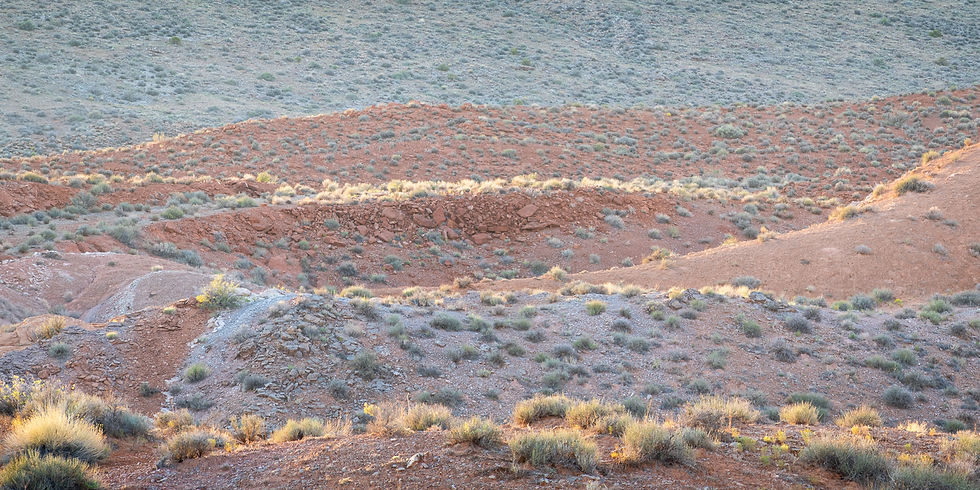The Illusion of Depth
- Don Rommes
- Oct 15, 2021
- 2 min read
Contrast and changing tonalities can create the illusion of depth in a 2-dimensional photograph, helping us interpret the scene as real and not an abstract. Without those clues (and others) a photo is more ambiguous—interesting as Art certainly, but less appropriate for stressed people in healthcare.
The two photos in this blog were taken in the same general region - perhaps about 1/2 mile from each other. One was taken in the morning, with the sun still behind a nearby mountain, the other was taken in the last few minutes before sunset.
The first photo can be appreciated as a two dimensional pattern comprised of the colorful clays in this area. But depth is also implied. The tonalities of the clay soil in the landscape trend from dark to light as one gets further from the camera position.
That tendency of colors and tones to appear lighter and bluer the further they are from us is normal and helps us understand which objects are closer and which are farther away. Same-sized objects also appear smaller the further they are from us. These two normal phenomena create the illusion of depth in two dimensional objects like photographs.

This photo, taken in the flat light of morning shade, can be viewed as either a two-dimensional pattern, or as a 3 dimensional landscape. The lighter hills in the background support the illusion of 3 dimensionality. We like that the photo can be appreciated as pattern or reality, but that uncertainty puts this photo in the Corporate Art section of Iris Arts and can't be vetted for patients in healthcare. Photo: © Donald J. Rommes
Light also gives a sense of dimensionality, This is especially true of directional light, where the source of light is clearly from one direction and where shadow and light define the subject, giving it volume and "weight."
In the photo below, the camera is pointing towards a ridge where the sun is about to set. The sun is directly illuminating (from behind) only the grasses. Dust in the air and bit of lens flare diffuse the light somewhat, softening the shadows. Still, the highlighted ridge-top grasses and the softly shadowed slopes facing us undeniable create the sense of depth in the image.
While there are nice patterns in the landscape here as well, this image seems less abstract than the first because of the clues provided by the lighting. Here, it is recognizable landscape first, patterned abstract a distant second.

Strong directional light on ridge-top grasses and shaded hillsides facing the viewer are strong clues to the depth (and reality) of this scene. Increased contrast and color saturation in the lower part of the image are also clues to its proximity. The lack of horizon and sky and the somewhat unusual geology may be confusing to some viewers, but we feel most will easily interpret this as a photo of a real landscape. Photo: © Donald J. Rommes




Comments